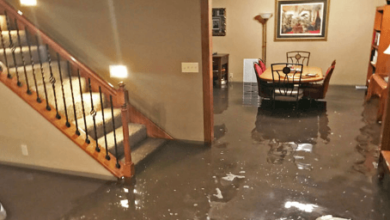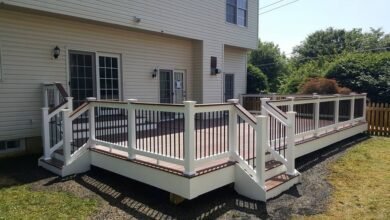The Ins and Outs of Choosing the Right Windows for Your Home

Windows are:
- A pivotal aspect of home design.
- Offering light and ventilation.
- A connection to the outdoors.
Selecting the right windows involves balancing aesthetics, practicality, and budget considerations. With the rise in window installation advancements, homeowners are now presented with various choices, each catering to specific needs and preferences.
Understanding Different Window Types
Windows come in many forms, each with distinct features and benefits. Casement windows open outwards like a door, offering superb ventilation and unobstructed views. In contrast, double-hung windows open vertically, effortlessly clean, and fit several architectural styles. Sliding windows provide expansive views and are easy to operate, making them ideal for areas with limited space. Meanwhile, bay windows extend outward, creating a spacious feel and additional seating or storage space. Understanding these variances is critical for choosing the best fit for your home’s demands and appearance.
Moreover, technological advancements have improved window functionality. For instance, windows with low-emissivity (Low-E) glass coatings minimize ultraviolet and infrared light passage through glass without compromising visible light. Similarly, awareness of U-Factor and SHGC ratings is essential as they influence a window’s ability to resist heat flow and block solar heat gain.
See also: The Silent Threat: Protecting Your Home from Crawl Space Contaminants
The Importance of Energy Efficiency
In the modern age, where energy conservation is pivotal, investing in energy-efficient windows can influence a household’s energy consumption and environmental impact. Double or triple glazing, insulating gas fills between glass panes, warm edge spacers, and airtight frames improve a window’s thermal performance. These components prevent air and temperature leaks, leading to consistent indoor temperatures. Switching to energy-saving windows benefits the environment and improves indoor comfort levels, reducing drafts and cold spots in the winter and overheating in the summer. For many homeowners, the long-term benefits, including potential increases in property value and incentives such as rebates, justify the initial investment. The nuanced differences between energy-efficient options can be explored further in discussions about the benefits of energy-saving windows.
Choosing the Right Materials
Deciding on the material for window frames is pivotal in determining the window’s durability, maintenance needs, and thermal efficiency. Traditional wood frames are lauded for their superior insulation and natural beauty but require regular upkeep to prevent degradation. Vinyl windows, made from polyvinyl chloride (PVC), offer durability, excellent energy efficiency, and affordability, making them a popular and low-maintenance choice. Unlike wood, vinyl doesn’t need painting or refinishing. While solid and lightweight, aluminum frames are less efficient in energy savings unless thermally improved.
Moreover, they complement modern designs with their sleek profiles. Lastly, fiberglass frames expand and contract at the same rate as glass, reducing the risks of seal failure and increasing energy efficiency while being rot—and deterioration-resistant. When choosing materials, consider the climate, ensuring they withstand harsh weather conditions without compromising appearance or functionality.
Impact on Home Aesthetics
The visual appeal of a home is greatly influenced by the windows, both from the inside and the outside. The size, shape, and location of windows affect the appearance of a room, accentuating significant architectural features or creating attractive, well-lit interiors. Expansive, frameless windows align with minimalist design philosophies, offering unobstructed views and enhanced natural lighting. Conversely, traditional double-hung or arched windows add a touch of nostalgia and charm, often resonating with colonial or Victorian architectural styles.
Moreover, windows can impact a home’s exterior façade, contributing to curb appeal and possibly increasing property value. Flawlessly integrating style with functionality often dictates the beauty and practicality of space usage, making window selection a vital aspect of architectural planning.
Installation Process Overview
Proper installation is critical to enhancing the performance and lifetime of windows. The process generally begins with careful measurement to ensure a perfect fit. Removing old windows can reveal structural issues or rot, which may require repair before new windows can be installed. Ensuring the frames’ structural integrity before installation helps prevent future problems such as leaks or misalignment. Professional installation guarantees that windows are sealed adequately to prevent air and water leaks. Installers employ various techniques such as foam insulation, flashings, and caulking to enhance the lifespan and efficiency of the windows. A well-executed installation ensures functionality and conserves energy, maintaining a comfortable indoor climate.
Maintenance Tips for Longevity
Regular maintenance extends the life of window installations and ensures they continue to perform effectively. For wood frames, periodic sanding and repainting help protect against environmental damage. Vinyl and aluminum frames typically require less maintenance but benefit from regular cleaning to prevent dirt accumulation that can affect functionality. Inspect windows regularly for signs of wear, such as damaged seals or hardware, and address issues promptly to avoid costly repairs. Ensuring that windows open and close smoothly indicates their mechanism is in good shape. Implementing preventive maintenance helps retain the aesthetic and functional aspects of windows, ultimately enhancing the home’s comfort and value.
Frequently Asked Questions
- What is the best type of window for insulation?
Triple-glazed windows, known for superior insulation and low U-Factor ratings, provide excellent energy efficiency. - How often should windows be replaced?
Windows should be changed every 15-20 years; however, inspection must detect signs of wear or damage much earlier. - Are there tax incentives for installing energy-efficient windows?
Some localities provide tax breaks or incentives for energy-efficient house upgrades; check local guidelines for potential savings.





